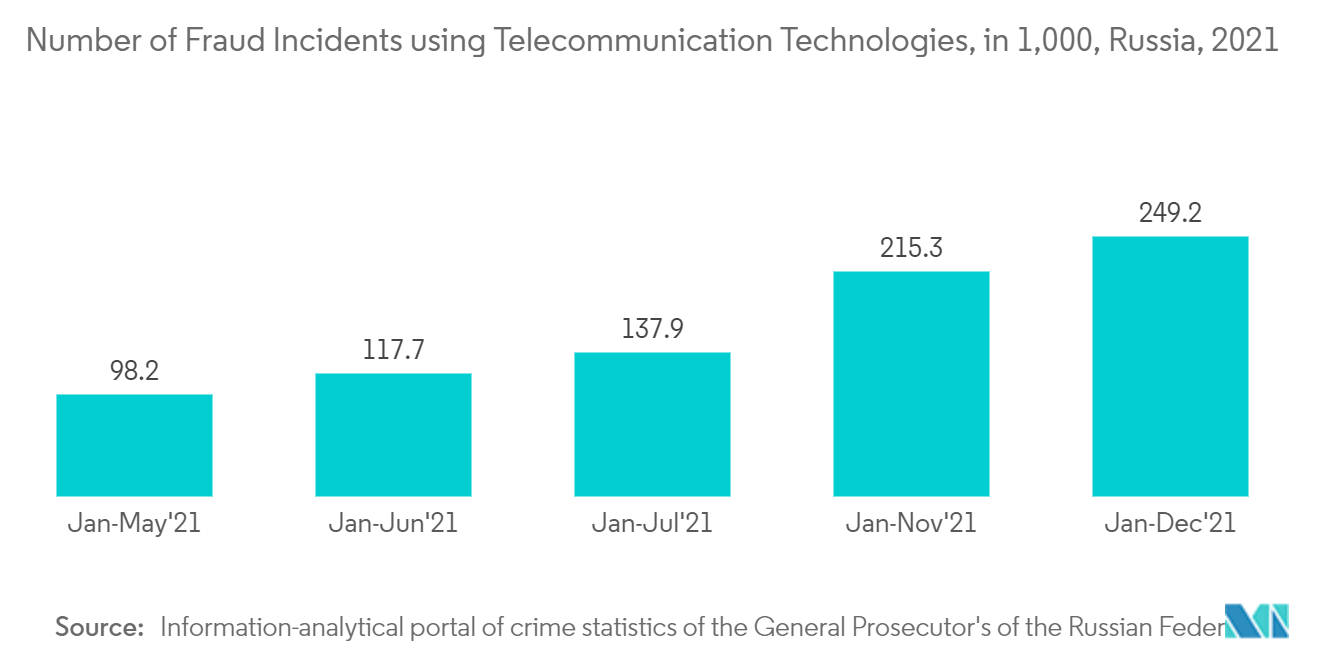Market Trends of Russia Cybersecurity Industry
This section covers the major market trends shaping the Russia Cybersecurity Market according to our research experts:
Cloud Segment is one of the Factor Driving the Market
- The increasing realization among enterprises about the importance of saving money and resources by moving their data to the cloud instead of building and maintaining new data storage is driving the demand for cloud-based solutions and hence, the adoption of on-demand security services in the region. Owing to multiple benefits, cloud platforms and ecosystems are anticipated to serve as a launchpad for an explosion in the pace and scale of digital innovation over the next few years.
- Security has been critical at each step of the cloud adoption cycle as IT provision has moved from on-premise to outside of the company's walls. SMEs prefer cloud deployment as it allows them to focus on their core competencies rather than invest their capital in security infrastructure since they have limited cybersecurity budgets.
- Furthermore, deploying public cloud service extends the boundary of trust beyond the organization, making Security a vital part of the cloud infrastructure. However, the increasing usage of cloud-based solutions has significantly simplified enterprises' adoption of cybersecurity practices.
- With the increased adoption of cloud services, such as Google Drive, Dropbox, and Microsoft Azure, among others, and with these tools emerging as an integral part of business processes, enterprises must deal with security issues, such as loss of control over sensitive data. This gives rise to the increased incorporation of on-demand cybersecurity solutions.
- Additionally, the increased adoption of cloud-based email security services is driving the adoption of services integrated with other security platforms, such as IPS and NGFW. This trend is demotivating enterprises to spend on on-premise and dedicated email or web security solutions. The companies partnering to obtain the benefits of services like Security, compliance, risk, and privacy teams need visibility into their managed cloud databases' security and risk posture to identify, assess and address their overall data security posture and degree of exposure to data breaches.

Telecommunication is One of the Sector Adopting Cybersecurity
- Distributed Denial of Service (DDoS) attack is one of the most standard types of direct cyberattacks. It could make a machine or network resource unavailable to its intended users by indefinitely or temporarily disrupting the services of a host in connection with the internet. These attacks can condense network capacity, swell traffic costs, disturb service availability, and even compromise internet access by hitting ISPs.
- Communication carriers are in the middle of technological evolution. Software-Defined Networks (SDNs) are transforming network management, and cloud computing helps telcos scale for growth. But with these opportunities come risks. Telcos often open themselves to cyber threats since they are responsible for constructing and operating crucial infrastructure needed to communicate and store sensitive data. Skilled hackers and government agencies deploy advanced persistent threats that could operate undetected. Communication channel components, such as edge devices, core network elements, and end-user services run on them, are often targeted.
- The telecom sector is booming with opportunities for operators to transform their revenue models by introducing new and innovative digital services related to IoT, 5G, e-commerce, data, content, OTT communications, and mobile payments or managed services. The increased IT infrastructure components, such as desktops, servers, information systems, data centers, and virtual machines, further add to the demand.
- For instance, 5G networks can be sliced into uniquely purposed slices, and each virtual network slice could demand unique security capabilities based on various usage scenarios. Security of 5G network infrastructure should also considerably evolve alongside the standard. Further, According to the Information-analytical portal of crime statistics of the General Prosecutors of the Russian Federation, In Russia, there were 249.2,000 fraud instances in 2021 that involved computers, mobile devices, the internet, or other information and telecommunications technology.
- Telecom companies have made considerable leaps in security to protect their networks and customers. Still, their employees and executives remain highly vulnerable to having their accounts compromised, according to research from cybersecurity company SpyCloud. Also, the 11 telecom companies in the Fortune 1000 comprise the most vulnerable industry in the study, which is at greater risk than retail, banking, healthcare, and other industries. This factor shows the significant need for cybersecurity solutions in the telecom sector.


